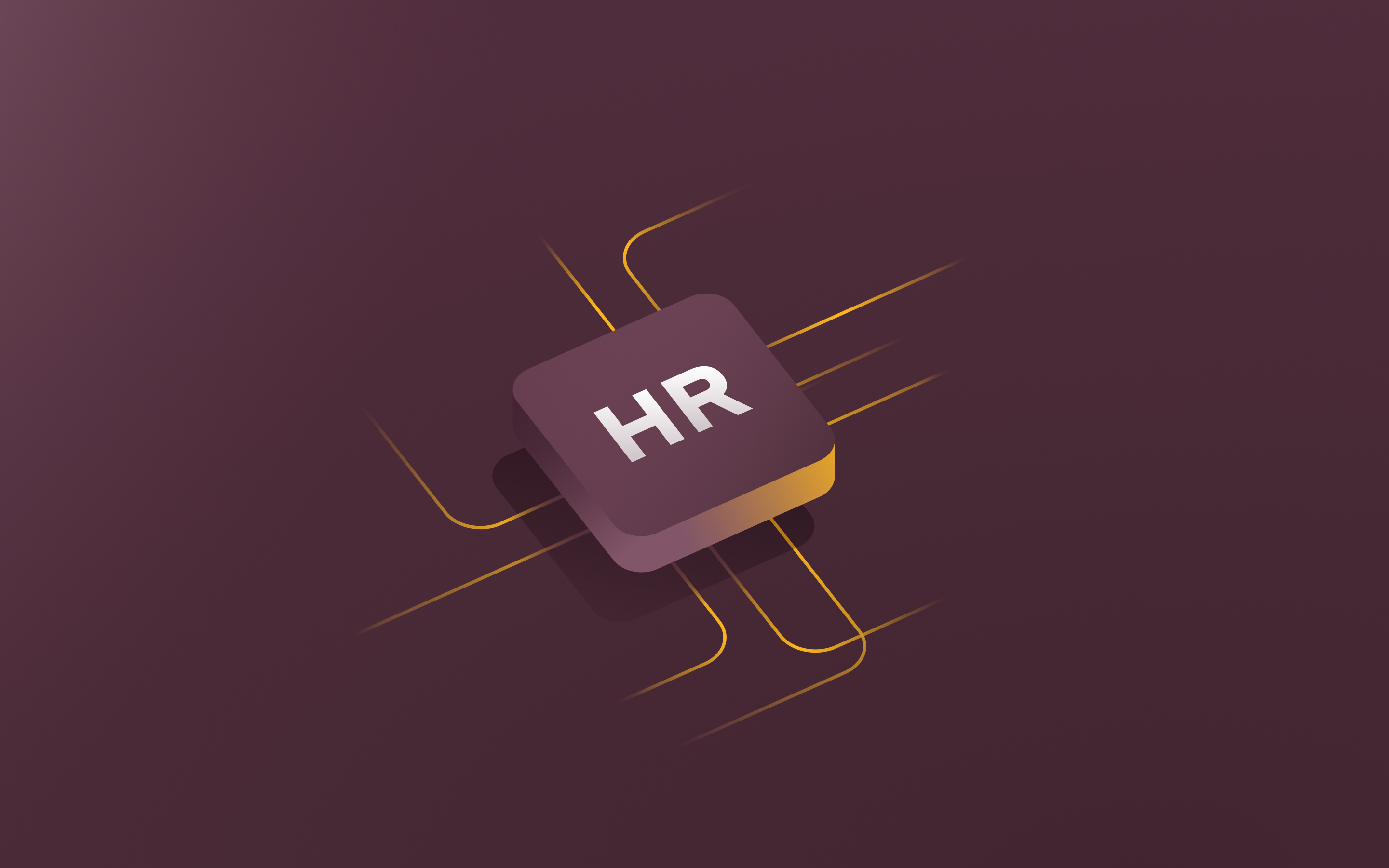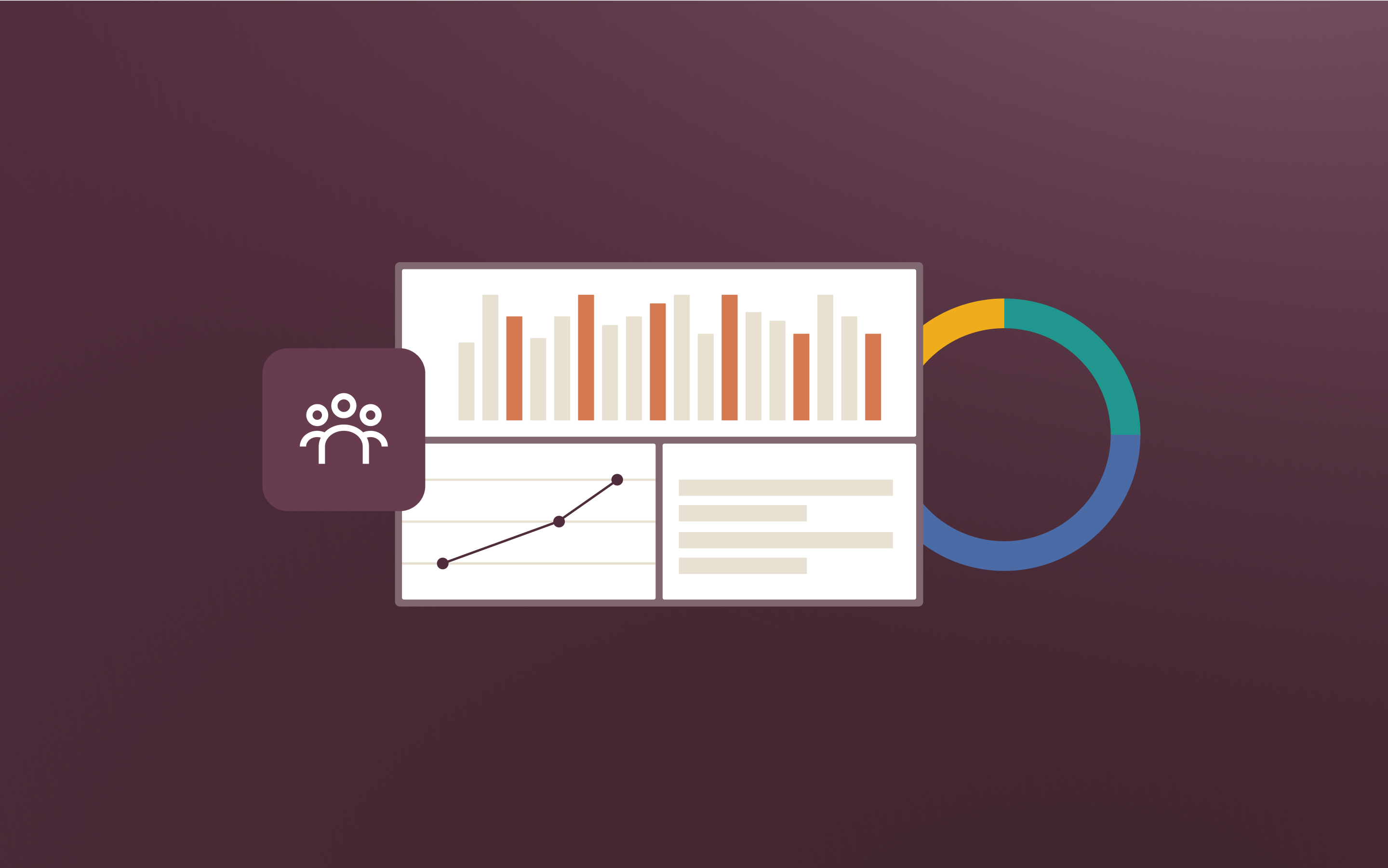10 HR technology trends to look out for in [2025]

As we head toward 2025, HR technology trends are shaping the way businesses manage their workforce and engage talent. For HR leaders, staying on top of these trends is key to keeping up with the industry and driving positive change within their organizations.
From remote work adaptations to AI-driven insights, the right HR tech can transform how HR teams operate, making it possible to enhance efficiency, build a dynamic employee experience, and focus on strategic initiatives that fuel growth.
This guide explores the most significant HR technology trends that may impact HR functions in 2025. Beyond just tech upgrades, these trends are about equipping HR teams with tools that streamline workflows, strengthen workforce engagement, and empower teams to make data-driven decisions.
Whether you're looking to boost talent retention, optimize onboarding, or create a seamless hybrid work environment, understanding these HR tech developments can give you an edge in a competitive talent market.
What is HR technology?
HR technology refers to the suite of tools and software solutions that support HR functions, from recruitment and onboarding to payroll, performance management, and employee engagement. Essentially, technology in HR serves as the backbone for managing the employee lifecycle, streamlining processes, and providing data insights for informed decision-making.By using human resources technology, HR teams can automate repetitive tasks, track workforce metrics, and enhance communication across departments. This technology also plays a major role in supporting hybrid work environments, compliance, and talent development, allowing HR leaders to shift their focus from administrative work to strategic planning and the employee experience.
Top 10 trends in HR tech for 2025
Below are some of the top HR tech trends expected to shape the human resources arena in the coming year:
1. HR skills adapting to remote and hybrid work
The shift to hybrid work models means HR teams need to refine their skills and adopt new approaches. Heading into 2025, HR leaders are likely to place an increasing focus on skills like digital communication, virtual onboarding, and remote performance management.
Upskilling initiatives and certifications focused on managing hybrid teams will become essential, ensuring that HR teams are in an optimal position to support employees, maintain productivity, and build a cohesive workforce across physical and virtual environments.
2. Expanding HR technology investments across the employee lifecycle
Companies are looking to support employees at every stage, from onboarding to offboarding. HR technology investments will expand to cover the entire employee lifecycle, with tools that cater to recruiting, onboarding, performance management, and employee engagement.
Investing in comprehensive HR platforms means less reliance on multiple disjointed systems and more seamless experiences for both HR teams and employees, supporting everything from smooth new-hire orientations to career development tracking.
3. Addressing HR pain points with new technology
Many HR departments currently face challenges, like administrative overload, time-consuming data entry, and complex compliance requirements. In response, HR technology innovations are set to take center stage in 2025, tackling these pain points with advanced automation tools that streamline tasks and centralize workforce data.
With sophisticated platforms, HR teams can automate payroll, benefits enrollment, and compliance checklists, freeing up valuable time to focus on high-impact initiatives, like workplace culture-building and employee wellness.
4. HR buying patterns and the rise of integrated solutions
The demand for integrated HR software is reshaping buying patterns, with more organizations seeking all-in-one platforms. Instead of juggling multiple providers, HR leaders in 2025 will lean toward integrated HR systems that centralize data and ensure consistency across HR functions, from recruitment to performance tracking.
This integration improves data accuracy and accessibility and also boosts collaboration across departments, providing HR professionals with a holistic view of workforce metrics.
5. AI and machine learning in HR
Artificial intelligence (AI) continues to revolutionize HR technology, particularly in areas like recruitment, employee engagement, and performance analysis. In 2025, AI and machine learning will play an even greater role in HR processes, offering predictive insights for talent retention, enhancing resume screening, and identifying potential leadership candidates.
By harnessing the power of AI, HR leaders can make data-driven decisions faster and tailor employee experiences based on predictive analytics.
6. HR analytics and data-driven decision-making
Data analytics remains a cornerstone of HR tech, enabling HR departments to transition from traditional, intuition-based decisions to a data-driven approach. The ability to analyze data on metrics like turnover rates and revenue per employee allows HR leaders to spot patterns, make informed decisions, and align HR strategies with business objectives.
7. Personalized employee development and learning
In 2025, personalized employee development and learning will remain a top trend in human resources as HR technology continues to enable customized training programs and development paths aligned with individual career goals. Learning Management Systems (LMS) play a key role in delivering these personalized experiences, allowing HR teams to tailor training content, track progress, and recommend learning opportunities based on each employee's role and aspirations.
By integrating an LMS into the development strategy, companies can promote a culture of continuous growth and skill-building. Personalized learning pathways boost engagement and also enhance retention, as employees feel more connected to their growth and career progression within the organization.
8. Automating compliance and legal requirements
With the complexities of legal regulations on the rise, HR technology in 2025 will emphasize solutions for automating compliance and streamlining legal requirements. From managing payroll taxes and benefits to monitoring adherence to workplace health and safety standards, AI-powered HR tech solutions will help HR teams reduce manual work and minimize compliance risks. AI and machine learning can track and update policies in real-time to match legal changes, creating automated alerts and checklists to keep HR teams informed.
By automating compliance tasks, HR departments can prioritize talent management and productivity initiatives instead of spending time on repetitive, risk-sensitive tasks.
9. Commitment to DEI
HR leaders will increasingly focus on using technology to advance diversity, equity, and inclusion (DEI) initiatives next year. The latest HR platforms provide tools for tracking diversity metrics, identifying DEI gaps, and ensuring fair talent acquisition practices across the organization. AI-driven analytics can help HR teams make data-backed decisions to address any inequalities in hiring, compensation, and career progression.
Additionally, upskilling programs tailored to underrepresented groups will play a key role, enabling HR leaders to foster a more inclusive workplace that promotes equity and empowerment.
10. Enhancing the employee experience
As organizations seek to improve retention and engagement, employee experience will remain a top priority in 2025. Advanced HR platforms enable personalized onboarding journeys, ongoing engagement tracking, and customized upskilling programs tailored to individual needs.Employee feedback tools provide real-time insights into team morale, performance, and workload, allowing HR leaders to adjust strategies accordingly. Integrating these tools across the employee lifecycle, from onboarding to offboarding, helps create a supportive, engaging work environment that drives satisfaction, productivity, and long-term retention.
How to embrace HR technology
For HR leaders looking to stay ahead in HR tech trends, embracing the right technology requires strategic planning and alignment with broader company goals. Here’s a step-by-step approach to help you maximize the impact of HR technology on efficiency, productivity, and employee engagement:
Step 1: Involve stakeholders early in the evaluation process
Engage key stakeholders—HR, IT, finance, and department heads—from the start of the evaluation phase to ensure the technology meets cross-departmental needs. This approach encourages a sense of ownership and helps identify core features and functions that are important to different teams.
For instance, HR might prioritize features that streamline onboarding, while finance might focus on budget controls within the HR software. Involving stakeholders early ensures the team considers all requirements, resulting in a more effective final choice.
Example: If your business is evaluating a new HR analytics platform, invite finance, operations, and HR leaders to participate in the selection process. This cross-functional team can assess if the platform’s data integration features align with broader reporting and analysis needs, such as budget tracking for finance or headcount planning for operations.
This collaborative approach helps ensure the platform provides value beyond HR, delivering insights that benefit the entire organization.
Step 2: Align HR technology with company-wide goals
To ensure a strong return on investment, align HR technology with broader organizational goals, such as boosting employee engagement, reducing turnover, or improving compliance. Start by outlining key objectives and identifying how specific human resources tech features support them.
For example, if talent retention is a priority, you might invest in tools that provide real-time employee feedback or career development resources, as these can directly impact employee experience and retention rates.
Example: If your company has a focus on lowering employee turnover, adopting an employee engagement platform that sends out monthly pulse surveys can capture real-time feedback on workplace issues and team morale. For instance, if the survey identifies that work-life balance is a top concern, HR leaders can respond by adjusting remote work policies or introducing flexible scheduling.
By addressing these issues early, the platform can help reduce employee churn. Its features align with your company’s retention and engagement goals, creating a more stable workforce.
Step 3: Choose low-code or no-code solutions for flexibility
Opting for low- or no-code HR solutions enables your HR team to modify and customize workflows without heavy reliance on IT. This flexibility is important for HR teams that need to adapt processes quickly, whether it’s updating onboarding checklists, modifying compliance documentation, or adding new training modules. Low-code solutions allow HR departments to handle these adjustments directly, improving agility and speed in responding to changing needs.
Example: Imagine your HR team is rolling out new onboarding workflows to accommodate the hiring of a remote workforce. With a no-code onboarding platform, your HR department can easily adjust checklists to include remote setup guides, software login instructions, and virtual training sessions without waiting for IT support. This agility ensures that new hires have a seamless, customized experience from day one.
Step 4: Prioritize automation for repetitive tasks
Automation in HR technology allows you to offload repetitive, time-consuming tasks, which saves time and reduces human error. Prioritize automation for activities like payroll processing, compliance tracking, document management, and scheduling, freeing up your HR team to focus on higher-impact tasks. By automating these areas, your team can shift attention to strategic initiatives, like improving the employee experience and enhancing talent management.
Example: If your business spends hours each week on manual payroll processing, adopting an HR platform with automated payroll and tax calculation can save significant time and reduce errors. This platform can handle payroll processing, automatically apply tax deductions, and generate detailed payroll reports.
For instance, if payroll previously took two days each pay period, automation could cut it down to a few hours, freeing HR staff to focus on high-impact tasks like developing training programs or onboarding new hires, rather than repetitive administrative work.
Step 5: Continuously assess and adapt to new HR tech trends
HR technology is rapidly evolving, so it’s vital to keep pace with emerging tech trends to optimize HR processes and remain competitive. Schedule regular technology assessments to evaluate the effectiveness of your current systems, explore emerging features, and identify areas for potential upgrades.
This process ensures that your organization is leveraging the latest advancements, from AI-driven analytics to personalized learning modules, which can elevate employee experience and support workforce productivity.
Example: If your organization is moving toward a remote or hybrid model, an annual tech review might reveal that your HR platform lacks essential features for supporting remote teams. For instance, while payroll functions smoothly, the platform may not offer tools for video onboarding, remote team-building, or virtual task management. With this insight, the HR team can explore a comprehensive solution that includes digital document signing, automated onboarding tasks, and integrated communication tools.
These upgrades ensure remote and hybrid employees receive a seamless and connected onboarding experience, aligning with the organization’s shift to flexible work arrangements.
Modernize your HR management with Rippling
Rippling offers a modern, all-in-one HR solution that streamlines core HR processes by automating tasks, seamlessly integrating systems, and empowering teams with intuitive tools. Built on a single source of truth, Rippling ensures consistency and accuracy across all HR functions.
Rippling's platform automates complex workflows, including onboarding and offboarding, by unifying HR, IT, and Spend systems. This unified approach allows you to manage employee data, payroll, benefits, and compliance all from one place, reducing manual effort and minimizing errors. Plus, by consolidating HR systems into one cohesive platform, Rippling provides your business with real-time insights and analytics, facilitating data-driven decision-making and human capital management.
The platform's user-friendly interface enables you to efficiently handle recruitment, performance management, and employee engagement initiatives. Employees can access self-service portals for benefits enrollment, time-off requests, and personal information updates, enhancing their experience and reducing administrative burdens.
If your business is looking to modernize HR management and stay at the forefront of HR tech trends, Rippling offers a scalable, adaptable solution that aligns with evolving needs. Its robust features and seamless functionality make it a valuable asset for HR professionals focused on boosting operational efficiency and employee satisfaction.
HR tech trends FAQs
How is HR changing with technology?
HR is changing fast with the integration of AI, automation, and data-driven insights, transforming talent acquisition, talent management, and everyday HR processes. AI enhances the talent acquisition process by streamlining candidate sourcing, screening, and interview scheduling, enabling HR systems to quickly identify top talent from vast candidate pools. In talent management, AI and automation improve personalization for employee development and career growth by analyzing performance data to recommend specific learning paths.
HR systems are also playing a major role in optimizing the workplace experience by automating administrative tasks and enabling remote access to employee resources, which improves overall efficiency and allows HR professionals to focus more on strategic goals.
How does HR technology support employee engagement?
HR technology is pivotal in promoting employee engagement by creating a more cohesive, personalized employee experience across various touchpoints, from hiring and onboarding to continuous development. Modern HR systems offer tools that let HR professionals regularly measure and track engagement through real-time feedback, surveys, and pulse checks. These insights can offer a clear view of what drives or detracts from engagement, enabling proactive solutions to potential issues before they impact productivity.
In addition, HR technology can enhance talent management by offering personalized learning and development opportunities, aligning with each employee's career goals. By centralizing these efforts, HR professionals can ensure a smoother, more engaging experience throughout the employee lifecycle.
What are the benefits of using HR tech in 2025?
HR tech can offer substantial benefits for HR professionals and the workplace, in 2025 and beyond. Leveraging AI enables faster, more precise decision-making across recruitment, performance evaluation, and retention strategies. With AI-driven insights, HR can enhance the employee experience by offering personalized development paths, tailored feedback, and real-time engagement monitoring.
HR tech also supports scalable solutions for evaluating and onboarding talent more efficiently. For employee well-being, it fosters a balanced work environment by automating time-consuming tasks, freeing up HR professionals to focus on strategic initiatives. Ultimately, HR technology empowers organizations to drive forward toward their overarching strategic goals, creating a more efficient, engaged, and aligned workforce.
What are three of the current HR software trends?
As highlighted in this article, numerous HR tech trends are redefining the industry, but here are three leading trends that are currently taking HR software by storm:
- AI integration has become essential for streamlining recruitment, enhancing employee engagement, and optimizing talent management, helping HR professionals automate repetitive tasks and focus on higher-level strategies.
- Cloud-based HR systems are also on the rise, supporting hybrid and remote work by making employee data accessible from anywhere and enriching the workplace experience.
- Employee experience platforms are gaining popularity, offering personalized career development tools, feedback systems, and engagement features to ensure that employees feel valued and supported throughout their tenure.
Together, these trends are transforming HR into a more adaptable, efficient, and employee-centered function, fundamentally reshaping how workplaces operate.
This blog is based on information available to Rippling as of November 7, 2024.
Disclaimer: Rippling and its affiliates do not provide tax, accounting, or legal advice. This material has been prepared for informational purposes only, and is not intended to provide or be relied on for tax, accounting, or legal advice. You should consult your own tax, accounting, and legal advisors before engaging in any related activities or transactions.










